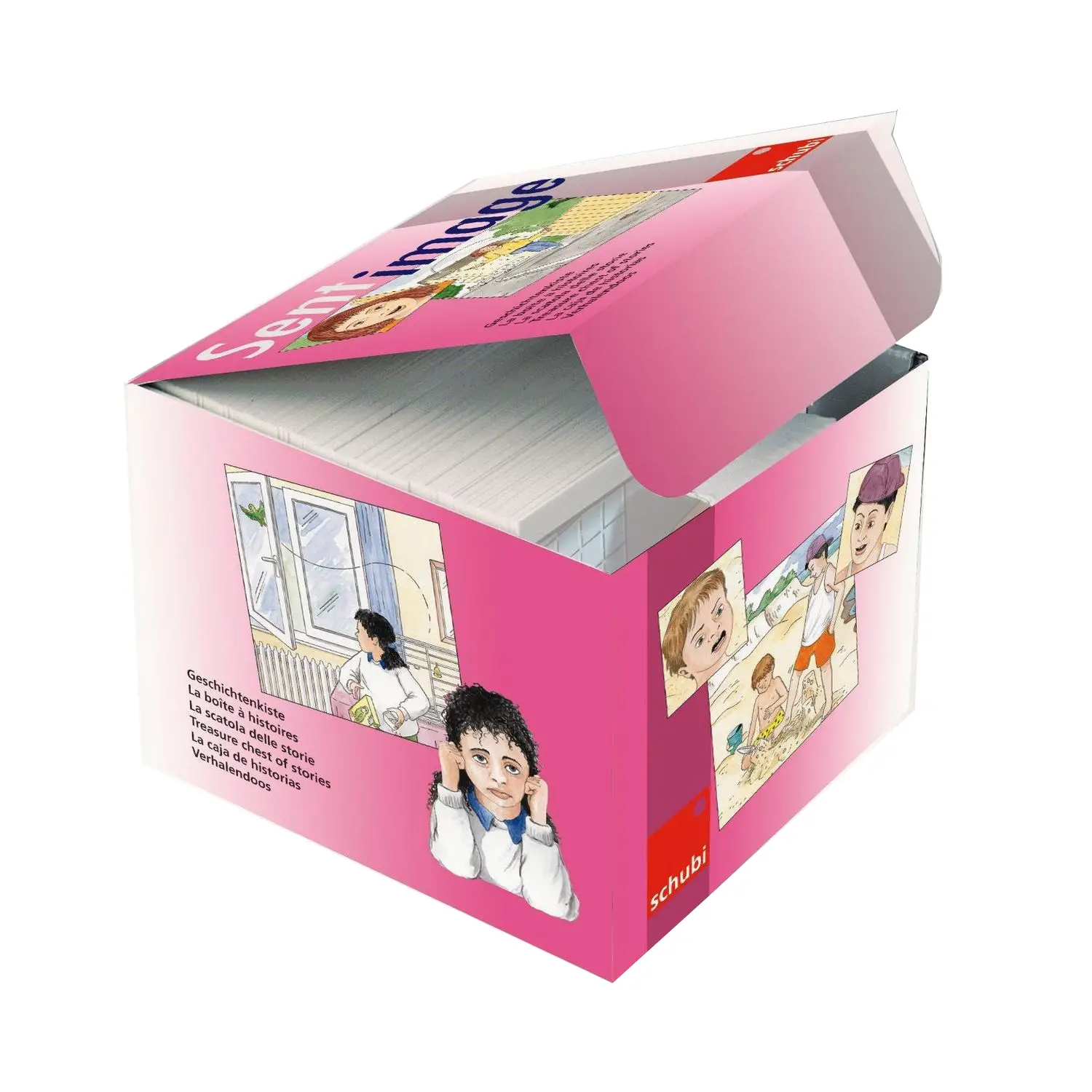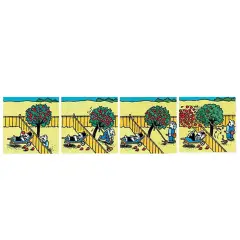Sentimage – Gioco Educativo di Narrazione Emotiva
PRODUCT CODE: 4351
EAN: 4006810120361
Look it up in the nursery and early childhood catalog
Look it up in the primary and secondary catalog
Look it up in the primary and secondary catalog
- ✅ 147 illustrazioni vivide e artistiche raffigurano scene emotive, ideali per sviluppare empatia e linguaggio nei bambini.
- ✅ Le carte 9x9 cm sono facili da maneggiare e suddivise in 32 episodi sequenziali per facilitare la narrazione visiva.
- ✅ Favorisce il riconoscimento e l'espressione delle emozioni, arricchendo il vocabolario emotivo dei bambini.
- ✅ Ideale per giochi di narrazione, abbinamento e drammatizzazione, adattabile a contesti educativi e terapeutici.
- ✅ Sviluppa pensiero critico, capacità di sequenziamento, empatia e riflessione su situazioni emotive diverse.
Full description
Sentimage – Gioco Educativo di Narrazione Emotiva
Sentimage è un gioco educativo che sviluppa comprensione emotiva, capacità linguistiche e narrazione creativa nei bambini attraverso l’uso di immagini sequenziali. Con 147 illustrazioni artistiche suddivise in 32 episodi, ogni scena racconta emozioni e situazioni quotidiane, aiutando i bambini a interpretare sentimenti complessi e a esercitare empatia.
Main features:
- 147 carte 9x9 cm con illustrazioni vivide e facilmente maneggiabili.
- 32 episodi sequenziali (3-7 scene ciascuno) per raccontare storie emozionanti e comprensibili.
- Sviluppo delle competenze linguistiche: favorisce vocabolario emotivo e abilità narrative.
- Versatile: ideale per attività individuali o di gruppo, a casa, a scuola o in contesti terapeutici.
Educational Goals:
- Riconoscimento delle emozioni: imparare a identificare e verbalizzare sentimenti complessi.
- Sequenziamento e narrazione: sviluppare pensiero logico e capacità di raccontare storie.
- Empatia e riflessione: comprendere come le emozioni influenzano comportamenti e relazioni.
Come si Gioca:
- Racconto di storie: ordinare le carte e narrare la sequenza degli eventi, discutendo le emozioni dei personaggi.
- Gioco di abbinamento: trovare scene dello stesso episodio e confrontare le emozioni raffigurate.
- Drammatizzazione: recitare gli eventi delle scene per approfondire la comprensione emotiva e sviluppare l’espressività.
Sentimage trasforma l’apprendimento emotivo in un’attività ludica e coinvolgente, combinando gioco, educazione e sviluppo delle competenze sociali e linguistiche.









